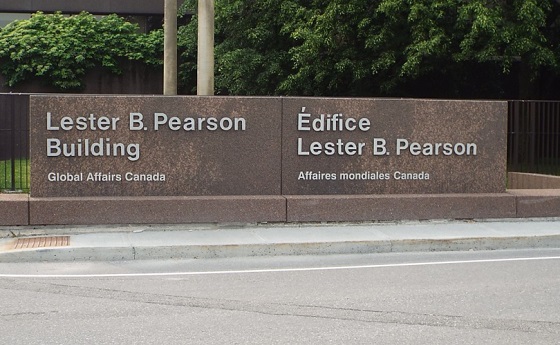Brownstone Institute
The establishment still pretending masks prevent COVID transmission

From the Brownstone Institute
BY
Naomi Oreskes, well-known science historian and co-author of Merchants of Doubt, argues that the public was “misled” by the 2023 Cochrane review, which concluded that wearing a face mask “probably makes little or no difference” in preventing SARS-CoV-2 transmission.
In an article published by Scientific American, Oreskes writes that “the average person could be confused” by the Cochrane study because its method of synthesising evidence prioritised “rigor over reality.”
 Naomi Orestes, professor at Harvard University
Naomi Orestes, professor at Harvard University
Oreskes criticises the Cochrane review for basing its findings “on randomized controlled trials, often called the ‘gold standard’ of scientific evidence,” and said the analysis ignored “epidemiological evidence because it didn’t meet its rigid standard.”
Oreskes concludes that Cochrane got it wrong because its methods are too rigorous and that “it’s time those standard procedures were changed.”
Peter Gøtzsche, a physician scientist who co-founded the Cochrane Collaboration in 1993 and an expert in research methodology, says he is “stunned” by her comments.
“It’s clear that Oreskes lacks scientific objectivity,” says Gøtzsche in a stinging rebuke. “Oreskes is actually arguing that the researchers should have lowered their standards and relied on weaker evidence in their review.”
 Peter Gøtzsche, Danish physician & co-founder of Cochrane Collaboration in 1993, now Deputy of the Institute For Scientific Freedom
Peter Gøtzsche, Danish physician & co-founder of Cochrane Collaboration in 1993, now Deputy of the Institute For Scientific Freedom
Oreskes cites a string of observational studies to support the use of face masks in preventing the spread of viruses. But Gøtzsche says the problem with observational studies is that “they’re often wrong.”
“Observational studies have multiple confounding factors that are difficult to control, which is often why you cannot establish a cause-and-effect relationship,” he explains.
“People argue that studies would show masks are effective if only people wore them correctly, but that’s nonsense,” says Gøtzsche. “If people won’t wear masks correctly, then that tells you that it’s not going to be an effective public health measure and shouldn’t be used.”
The CDC has published multiple observational studies in its Morbidity and Mortality Weekly Report (MMWR), which has substantial influence on US health policy and is widely cited as evidence of mask effectiveness.
But an analysis by Høeg et al, published in Am J Med found that “MMWR publications pertaining to masks drew positive conclusions about mask effectiveness >75% of the time despite only 30% testing masks and <15% having statistically significant results.”
Two randomised controlled trials on masking were carried out during the Covid pandemic – one in Denmark and the other in Bangladesh– but both had underwhelming outcomes.
Oreskes castigates Tom Jefferson, lead author on the Cochrane study, for saying that wearing a face mask “makes no difference – none of it” and that he made “the classic error of conflating absence of evidence with evidence of absence.”
But Gøtzsche says, “There is not an absence of evidence. There is evidence from randomised trials, including those trying to prevent influenza transmission, and it shows that masks just don’t work.”
They Knew All Along….
The reality is that health authorities knew there was no evidence that face masks could stop viral transmission during a pandemic.
In February 2020 for example, then US surgeon general Jerome Adams urged Americans against using face masks. “Seriously people—STOP BUYING MASKS!” They are NOT effective in preventing general public from catching #Coronavirus,” he blasted in a tweet.
In March 2020, a WHO official said, “There is no specific evidence to suggest that the wearing of masks by the mass population has any potential benefit. In fact, there’s some evidence to suggest the opposite in the misuse of wearing a mask properly or fitting it properly.”
England’s then deputy chief medical officer Dame Jenny Harries agreed, saying that masks in the community could cause harm by giving people “a false sense of security.” She warned, “The average member of the public walking down the street [wearing a mask] is really not a good idea.”
And Anthony Fauci who was then director of NIAID, told 60 Minutes, “Right now in the United States, people should not be walking around with masks.”
Fast-forward several weeks and the narrative suddenly changed. Not only did health officials flip on their advice, but they also pushed for masks to be mandatory in hospitals, outdoor settings, and schools for young children.
In hindsight, it was bad advice.
A new systematic review by Sandlund et al published in BMJ’s Archives of Diseases in Childhood shows that public health officials were wrong to mandate masks for children due to an absence of high quality evidence.
The authors write, “In medicine, new interventions with unknown benefit but known or potential risks cannot be ethically recommended or enforced until absence of harm is demonstrated.”
The study outlines “an extensive body of research” suggesting the harms associated with children wearing masks, and adds “we fail to find any evidence of benefit from masking children, to either protect themselves or those around them, from covid-19.”
The authors conclude that “recommending child masking does not meet the accepted practice of promulgating only medical interventions where benefits clearly outweigh harms.”
Gøtzsche agrees, “Forcing people to wear masks has been a failure of public health. The reason we are still having the mask debate is because authorities relied on trash studies to justify their use, and wanted to appear as if they were doing something. In a crisis, it is always more difficult to do nothing.”
Republished from the author’s Substack
Brownstone Institute
Bizarre Decisions about Nicotine Pouches Lead to the Wrong Products on Shelves

From the Brownstone Institute
A walk through a dozen convenience stores in Montgomery County, Pennsylvania, says a lot about how US nicotine policy actually works. Only about one in eight nicotine-pouch products for sale is legal. The rest are unauthorized—but they’re not all the same. Some are brightly branded, with uncertain ingredients, not approved by any Western regulator, and clearly aimed at impulse buyers. Others—like Sweden’s NOAT—are the opposite: muted, well-made, adult-oriented, and already approved for sale in Europe.
Yet in the United States, NOAT has been told to stop selling. In September 2025, the Food and Drug Administration (FDA) issued the company a warning letter for offering nicotine pouches without marketing authorization. That might make sense if the products were dangerous, but they appear to be among the safest on the market: mild flavors, low nicotine levels, and recyclable paper packaging. In Europe, regulators consider them acceptable. In America, they’re banned. The decision looks, at best, strange—and possibly arbitrary.
What the Market Shows
My October 2025 audit was straightforward. I visited twelve stores and recorded every distinct pouch product visible for sale at the counter. If the item matched one of the twenty ZYN products that the FDA authorized in January, it was counted as legal. Everything else was counted as illegal.
Two of the stores told me they had recently received FDA letters and had already removed most illegal stock. The other ten stores were still dominated by unauthorized products—more than 93 percent of what was on display. Across all twelve locations, about 12 percent of products were legal ZYN, and about 88 percent were not.
The illegal share wasn’t uniform. Many of the unauthorized products were clearly high-nicotine imports with flashy names like Loop, Velo, and Zimo. These products may be fine, but some are probably high in contaminants, and a few often with very high nicotine levels. Others were subdued, plainly meant for adult users. NOAT was a good example of that second group: simple packaging, oat-based filler, restrained flavoring, and branding that makes no effort to look “cool.” It’s the kind of product any regulator serious about harm reduction would welcome.
Enforcement Works
To the FDA’s credit, enforcement does make a difference. The two stores that received official letters quickly pulled their illegal stock. That mirrors the agency’s broader efforts this year: new import alerts to detain unauthorized tobacco products at the border (see also Import Alert 98-06), and hundreds of warning letters to retailers, importers, and distributors.
But effective enforcement can’t solve a supply problem. The list of legal nicotine-pouch products is still extremely short—only a narrow range of ZYN items. Adults who want more variety, or stores that want to meet that demand, inevitably turn to gray-market suppliers. The more limited the legal catalog, the more the illegal market thrives.
Why the NOAT Decision Appears Bizarre
The FDA’s own actions make the situation hard to explain. In January 2025, it authorized twenty ZYN products after finding that they contained far fewer harmful chemicals than cigarettes and could help adult smokers switch. That was progress. But nine months later, the FDA has approved nothing else—while sending a warning letter to NOAT, arguably the least youth-oriented pouch line in the world.
The outcome is bad for legal sellers and public health. ZYN is legal; a handful of clearly risky, high-nicotine imports continue to circulate; and a mild, adult-market brand that meets European safety and labeling rules is banned. Officially, NOAT’s problem is procedural—it lacks a marketing order. But in practical terms, the FDA is punishing the very design choices it claims to value: simplicity, low appeal to minors, and clean ingredients.
This approach also ignores the differences in actual risk. Studies consistently show that nicotine pouches have far fewer toxins than cigarettes and far less variability than many vapes. The biggest pouch concerns are uneven nicotine levels and occasional traces of tobacco-specific nitrosamines, depending on manufacturing quality. The serious contamination issues—heavy metals and inconsistent dosage—belong mostly to disposable vapes, particularly the flood of unregulated imports from China. Treating all “unauthorized” products as equally bad blurs those distinctions and undermines proportional enforcement.
A Better Balance: Enforce Upstream, Widen the Legal Path
My small Montgomery County survey suggests a simple formula for improvement.
First, keep enforcement targeted and focused on suppliers, not just clerks. Warning letters clearly change behavior at the store level, but the biggest impact will come from auditing distributors and importers, and stopping bad shipments before they reach retail shelves.
Second, make compliance easy. A single-page list of authorized nicotine-pouch products—currently the twenty approved ZYN items—should be posted in every store and attached to distributor invoices. Point-of-sale systems can block barcodes for anything not on the list, and retailers could affirm, once a year, that they stock only approved items.
Third, widen the legal lane. The FDA launched a pilot program in September 2025 to speed review of new pouch applications. That program should spell out exactly what evidence is needed—chemical data, toxicology, nicotine release rates, and behavioral studies—and make timely decisions. If products like NOAT meet those standards, they should be authorized quickly. Legal competition among adult-oriented brands will crowd out the sketchy imports far faster than enforcement alone.
The Bottom Line
Enforcement matters, and the data show it works—where it happens. But the legal market is too narrow to protect consumers or encourage innovation. The current regime leaves a few ZYN products as lonely legal islands in a sea of gray-market pouches that range from sensible to reckless.
The FDA’s treatment of NOAT stands out as a case study in inconsistency: a quiet, adult-focused brand approved in Europe yet effectively banned in the US, while flashier and riskier options continue to slip through. That’s not a public-health victory; it’s a missed opportunity.
If the goal is to help adult smokers move to lower-risk products while keeping youth use low, the path forward is clear: enforce smartly, make compliance easy, and give good products a fair shot. Right now, we’re doing the first part well—but failing at the second and third. It’s time to fix that.
Addictions
The War on Commonsense Nicotine Regulation

From the Brownstone Institute
Cigarettes kill nearly half a million Americans each year. Everyone knows it, including the Food and Drug Administration. Yet while the most lethal nicotine product remains on sale in every gas station, the FDA continues to block or delay far safer alternatives.
Nicotine pouches—small, smokeless packets tucked under the lip—deliver nicotine without burning tobacco. They eliminate the tar, carbon monoxide, and carcinogens that make cigarettes so deadly. The logic of harm reduction couldn’t be clearer: if smokers can get nicotine without smoke, millions of lives could be saved.
Sweden has already proven the point. Through widespread use of snus and nicotine pouches, the country has cut daily smoking to about 5 percent, the lowest rate in Europe. Lung-cancer deaths are less than half the continental average. This “Swedish Experience” shows that when adults are given safer options, they switch voluntarily—no prohibition required.
In the United States, however, the FDA’s tobacco division has turned this logic on its head. Since Congress gave it sweeping authority in 2009, the agency has demanded that every new product undergo a Premarket Tobacco Product Application, or PMTA, proving it is “appropriate for the protection of public health.” That sounds reasonable until you see how the process works.
Manufacturers must spend millions on speculative modeling about how their products might affect every segment of society—smokers, nonsmokers, youth, and future generations—before they can even reach the market. Unsurprisingly, almost all PMTAs have been denied or shelved. Reduced-risk products sit in limbo while Marlboros and Newports remain untouched.
Only this January did the agency relent slightly, authorizing 20 ZYN nicotine-pouch products made by Swedish Match, now owned by Philip Morris. The FDA admitted the obvious: “The data show that these specific products are appropriate for the protection of public health.” The toxic-chemical levels were far lower than in cigarettes, and adult smokers were more likely to switch than teens were to start.
The decision should have been a turning point. Instead, it exposed the double standard. Other pouch makers—especially smaller firms from Sweden and the US, such as NOAT—remain locked out of the legal market even when their products meet the same technical standards.
The FDA’s inaction has created a black market dominated by unregulated imports, many from China. According to my own research, roughly 85 percent of pouches now sold in convenience stores are technically illegal.
The agency claims that this heavy-handed approach protects kids. But youth pouch use in the US remains very low—about 1.5 percent of high-school students according to the latest National Youth Tobacco Survey—while nearly 30 million American adults still smoke. Denying safer products to millions of addicted adults because a tiny fraction of teens might experiment is the opposite of public-health logic.
There’s a better path. The FDA should base its decisions on science, not fear. If a product dramatically reduces exposure to harmful chemicals, meets strict packaging and marketing standards, and enforces Tobacco 21 age verification, it should be allowed on the market. Population-level effects can be monitored afterward through real-world data on switching and youth use. That’s how drug and vaccine regulation already works.
Sweden’s evidence shows the results of a pragmatic approach: a near-smoke-free society achieved through consumer choice, not coercion. The FDA’s own approval of ZYN proves that such products can meet its legal standard for protecting public health. The next step is consistency—apply the same rules to everyone.
Combustion, not nicotine, is the killer. Until the FDA acts on that simple truth, it will keep protecting the cigarette industry it was supposed to regulate.
-

 Fraser Institute1 day ago
Fraser Institute1 day agoCourts and governments caused B.C.’s property crisis—they’re not about to fix it
-

 Alberta1 day ago
Alberta1 day agoChatGPT may explain why gap between report card grades and standardized test scores is getting bigger
-

 Energy11 hours ago
Energy11 hours agoIt should not take a crisis for Canada to develop the resources that make people and communities thrive.
-

 International2 days ago
International2 days agoIs America drifting toward civil war? Joe Rogan thinks so
-

 Censorship Industrial Complex2 days ago
Censorship Industrial Complex2 days agoEU’s “Democracy Shield” Centralizes Control Over Online Speech
-

 Alberta19 hours ago
Alberta19 hours agoFederal budget: It’s not easy being green
-

 International2 days ago
International2 days agoUS announces Operation Southern Spear, targeting narco-terrorists
-

 International2 days ago
International2 days agoBondi and Patel deliver explosive “Clinton Corruption Files” to Congress









